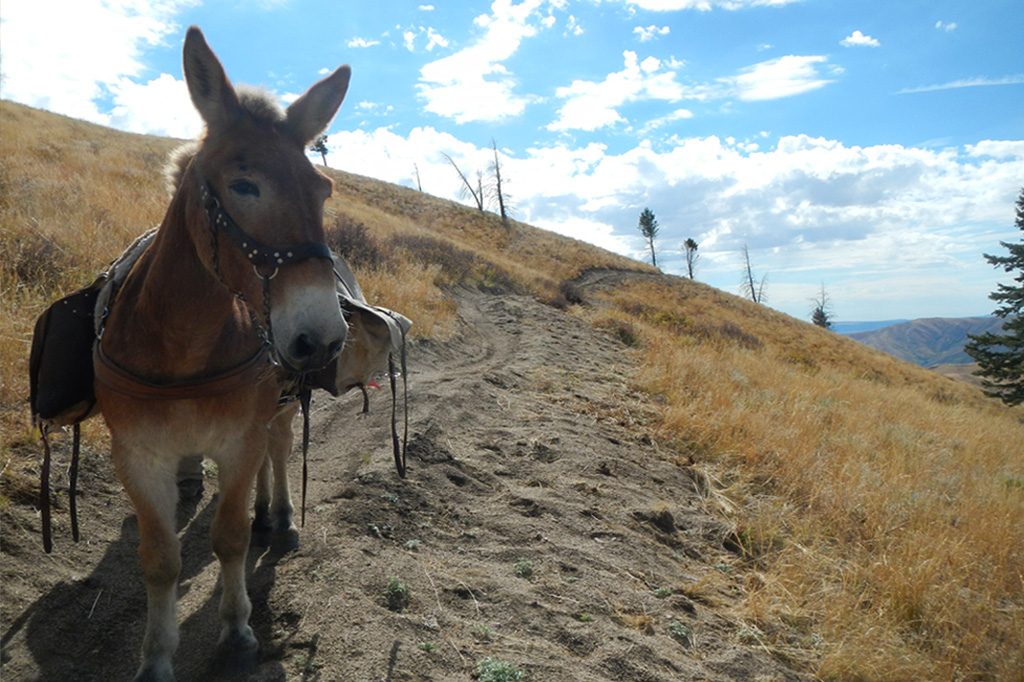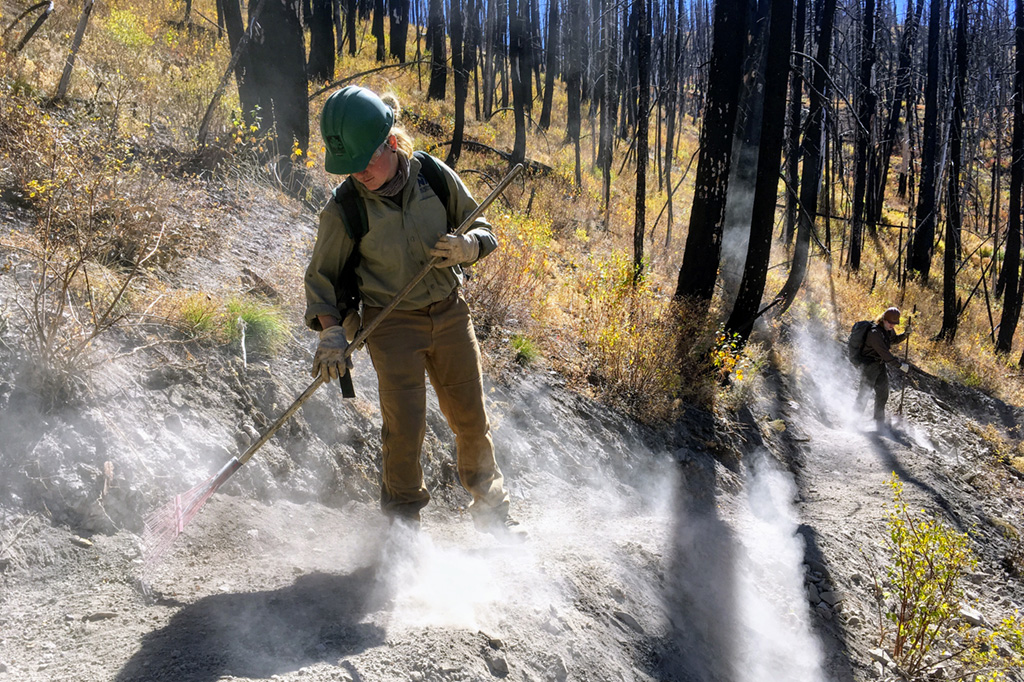People come to the Wood River Valley for the trails. They bring their bikes, their running shoes, horses and dogs to enjoy the miles and miles of of maintained trails from Deer Creek to the West side of the Pioneers and then some. To be exact, the Ketchum Ranger District (KRD) is responsible for maintaining over 400 miles of trails for a variety of recreational users. Half of the trails are open to motorized recreationalists, and all but eight miles are available to mountain bike riders. All of it is accessible to hikers and horseback riders.
For all of those miles of joyus single track, solitary afternoons and hard earned glorious views, the ideal KRD trail crew is made up of just six people.
“This year we were able to meet our goal [with trail crew hiring],” said Justin Blackstead, Trail Crew Supervisor for the KRD. “ But with fluctuating budgets it’s a crapshoot on what the crew looks like year to year.”
The trail crew costs around $100,000 each season, according to Blackstead, including everything from wages to supplies. This year the crew received less than $40,000 from the Forest Service. That money was used to match Idaho Department of Parks and Recreations grants to make a viable season.
“The hardest part is that we have to apply for these grants every year,” said Blackstead, “and they are very competitive, so we never have a solid funding source. It’s really stressful having to look at your crew and not know if they will have a job the next summer.”
Somebody who has an intimate knowledge of the stresses of grant writing and the laborious work of trail crew is Sara Gress. Gress worked trails for three seasons and admitted that she was “fricken exhausted all the time.” Except she didn’t say fricken. Now, she has taken on the role as the new executive director of what used to be the Wood River Bicycle Coalition and is being renamed the Wood River Trails Coalition (WRTC). The nonprofit was created as such by Greg Martin, husband of famed endurance athlete Rebecca Rusch, in 2011. Its main goals have always been to organize volunteer trail work and to create a robust and reliable funding stream for the KRD trail crew through donations.

Ketchum Ranger District receives money for workers’ wages and assets like this pack mule from the U.S. Forest Service and from a variety of grants. Photo courtesy Ketchum Ranger District.
Why rename the organization? “Because semantics matter,” Gress explained. “Changing our name will hopefully bring people in, broaden our reach and create a sense of pride and ownership [for the trails] in our Valley. We want to be an advocate for the trails. Not just a single group.”
“We have a lot of trails, used by a lot of different users,” explained Chris Leman, who has been the Blaine County Recreation District Trails Coordinator since 2014. “And we’ve got to get along out there.” Leman works closely with federal organizations doing trail work and community outreach. He moved to the Valley in 1989 and immediately fell in love with the trails, just like many others.
“Trail use increased like crazy in the early 1990s,” Leman said. “Mountain bikers were pretty new, and it took some getting used to in terms of sharing.”
Even with the added stress of a new demographic of trail users, Leman feels that concerned trail users and the Ketchum Ranger District were lucky. They got in front of the issues by early on spreading the message of trail etiquette. “We still operate on a shared use approach versus a separate use,” said Leman. “Perhaps in the future that will change. But, thankfully, we don’t have that many pressures yet, and it forces us to get along.”
The advice from new WRTC board member Katelyn Berman on getting along is simple: “Be nice.”
Berman is an experienced horseback rider and packer and a mountain biker. Two years ago, she and two other women completed a 900-mile journey on horseback from Astoria, Ore., to Stanley, Idaho. They called it the Ride for Redd to raise awareness of a dangerously declining salmon population.
Her hope for her role in the WRTC is to reach out to the “multi-demographic user” and create a general understanding of respectfulness. “The WRTC is a culture building organization promoting community ownership,” Berman said. “It has the potential to be really cool. But if it’s just you me and the board thinking it’s cool, then nothing will come of it.”
All in all, the Wood River is still a relatively remote destination, and users still have the privilege of accessing a wealth of trails to disappear down—whether for days or just an afternoon—in any way they choose, without having to think about how that trail got there and what it takes to keep it in good shape.
“It’s important for people to understand this rebranding of the WRTC by having boots on the ground in spreading the word,” said Cameron Llyod, content manager at Club Ride Apparel and WRTC board member for several years. “Because when people know that their money would be used to maintain and build a trail, they are more than willing to contribute. That’s the community we live in.”


